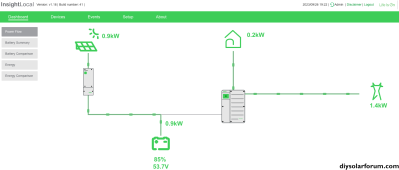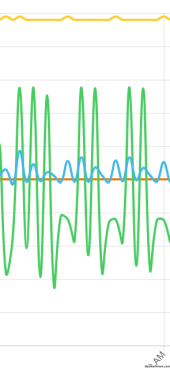When on Grid Support, it will export battery energy even if more than enough solar power for the load. If I turn off GS, it will not export to grid. I suspect this is a feature. It has always seemed to me like there should be a grid support-conserve battery option. Maybe I missed that.
On-Grid
XW Pro 6848
MPPT 80-600 x 2
Discover 42-48-6650 Li-Ion x3
Generac 6730 20KVA
300-w panels.x24
Apologies, I'm still not clear on what the issue is, or what you are trying to get it to do that it's not doing.
If you want it to export excess PV energy to the grid after the batteries are full, thats what enhanced grid support does.
The way it works is:
you set your grid support volts to 65.
You set your inverter to 2 stage charging (or disable it completely)
you set the Schnieder SCC (it must be schnieder, and connected via xanbus) to 3 stage. Set your bulk, absorg, and float voltages to whatever makes sense for your batteries.
When the sun is shining, the system will prioritize charging the batteries. Once your SCC switches to float mode AND the batteries "rest" down to float voltage, the XW Pro will begine exporting the energy being generated.
The last part is key. A lot of people think it's not working because they set float lower than bulk/absorb. So the SCC charges the batteries to (for example) 56v, but then the SCC switches to float at 54v. While the batteries are above 54v, the SCC doesn't want to "overcharge" the batteries, so it produces no power. When the batteries hit roughly float volage, the SCC will start producing energy from the available PV.
Depending on your battery chemistry, it can take a while to let batteries drop to that float voltage. So my recommendation would be to set bulk/absorb/float all to the same voltage. If thats not an option, enable the settings and watch it for a while. see if it starts exporting when the voltage drops after the SCC's have switched to float.
If that helps, cool. If not, please write a detailed description that includes 2 things. 1) What you expect the system to be doing. and 2) What it's actually doing. Please make sure to include config details/parameters.




